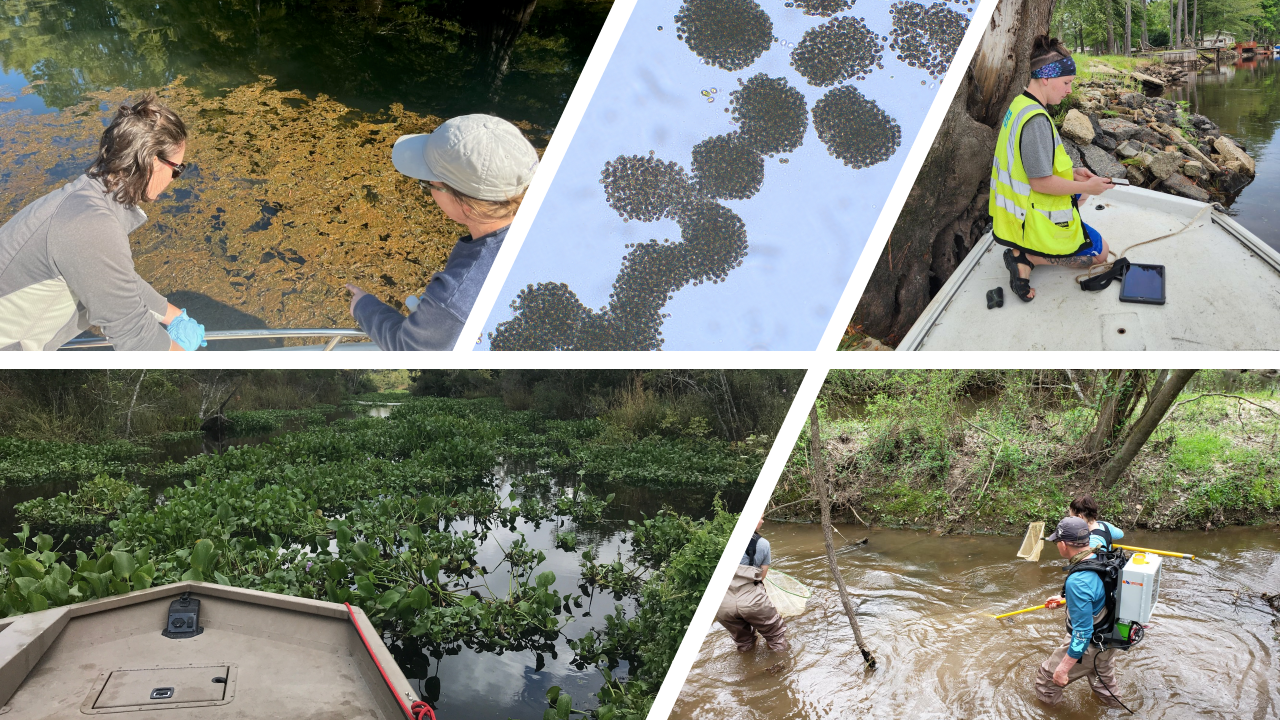Aquatic Science is a Division of the SCDES Bureau of Water. The Division strives to use evolving science and emerging information. We ensure the right data and the best management techniques are available to keep South Carolina’s waters safe, healthy, and accessible for the many uses of these resources including recreation, drinking, and agriculture.
South Carolina’s population is growing rapidly, which places increasing demands on the State’s natural resources. These pressures pose new challenges for water quality and present more pathways for human and wildlife exposure to aquatic health hazards. Aquatic Science data and resource management are critical to ensure that the demands on aquatic resources are met while humans and wildlife are protected.
The Aquatic Science team conducts year-round sampling and resource management across South Carolina. The Division continually strives to improve water quality monitoring programs by producing high-quality data and tools that clearly and easily communicate information to the public. Specifically, Aquatic Science data helps identify trends in water quality and emerging water quality concerns, supports planning for industrial and municipal wastewater permits, and determines if waterways are meeting state water quality standards.

Priorities for the Aquatic Science Division are:
- Managing the statewide SCDES ambient water quality monitoring network
- Controlling the spread of invasive aquatic plants
- Monitoring water quality to support commercial and recreational shellfish harvesting
- Identifying and investigating harmful algal blooms in State lakes
- Promulgating and maintaining fish consumption advisories
- Monitoring bacteria levels and issues advisories for South Carolina beaches
- Conducting benthic macroinvertebrates and special (targeted) assessments in freshwater streams
On this page you can find technical documents, special study reports, and standard operating procedures for the Aquatic Science Division, some in collaboration with outside partners. The links on the left side of the page provide detailed information on specific Aquatic Science programs and initiatives.
Quick Links to Data Tools
Harmful Algal Bloom Monitoring App
Ambient Surface Water PFAS Data
South Carolina Watershed Atlas
Technical Reports
Beach Monitoring
- 2024 Beach Monitoring Program Sampling and Advisory Data
- 2021 Beach Monitoring Program Sampling and Advisory Data
Macroinvertebrates
- Aquatic Macroinvertebrate Bioassessment of the North Fork of the Edisto River After a Cyanide Release
- Impacts of Coal Tar Contamination on the Invertebrate Community of the Congaree River near the City of Columbia
- Key to Common Aquatic Invertebrates of the Waccamaw River
Fish Tissue
- Lead Screening Study of Fish in Gills Creek Watershed
- Mercury bioaccumulation in Tilefish (Lopholatilus chamaeleonticeps) from Offshore Waters of South Carolina, USA
- Mercury in South Carolina Fishes, USA
- Uranium and Fluoride in Fish from the Congaree River
Water Quality
- 2024 Parr Shoals and Monticello Reservoirs Nutrient Study
- Lake Hartwell – Eighteenmile Creek Lake Arm 2023 Nutrient Study
- Lake Murray Little Saluda River and Bush River Arms 2022 Nutrient Study
- 2021 Lake Murray Little Saluda River and Bush River Arms Nutrient Study
- A Bacteriological Assessment of Surface Water Quality in a Small Sub-Watershed of the Okatee River Basin
- Big Wateree Creek 2019 Report
- Lead: A Review of Lead in Surface Waters Jan. 2020
- Lead: Update Regarding Lead (Pb) Waters of Concern Oct. 2020
- Lower Catawba River Basin - 2019 Stream and Lake Nutrient Water Quality Study
- Lower Catawba River Basin – 2020 Nutrient Study
- Okatee River Environmental Condition Assessment 2019
- Okatee River Environmental Condition Assessment 2019 Volume 2 - Raw Data
- Synopsis: Development and Adoption of the Escherichia coli Freshwater Water Quality Standard
- Synopsis: Development and Adoption of the Escherichia coli Freshwater Water Quality Standard, Volume II – Raw Data
- The Condition of South Carolina's Estuarine and Coastal Habitats (by year)
Harmful Algal Blooms
- 2023 SC Cyanotoxin Distribution Project
- 2022 SC Cyanotoxin Distribution Project
- 2021 SC Cyanotoxin Distribution Project
- 2020 SC Cyanotoxin Distribution Project
- 2019 SC Cyanotoxin Distribution Project
- 2018 SC Cyanotoxin Distribution Project
Standard Operating Procedures

